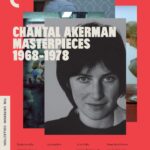A Bread Factory: World Serves Its Own Needs, by Scott Nye
At four hours, writer/director Patrick Wang’s two-part film A Bread Factory is certainly giving itself the space to be as rich, thoughtful, and imaginative as it is, but anyone who’s sat through the average thirteen-hour season of modern television can attest, that length does not necessarily result in much depth. Almost thematically pregnant, the film uses the precarious funding at a small community theatre to consider the fraught place we find ourselves these days culturally. Pulled out of our communities and into the global space, we’ve lost a good deal of what was once considered local culture, so much so that it becomes difficult to even recognize the need to seek out small, personal works of art when that space has its own national brands. Once the local art starts to drift, so too goes the culture, until the town is no longer a place unto itself but a subsidiary of larger forces mining it for resources and money.
Dorothea (Tyne Daly) and Greta (Elisabeth Henry) are partners in love and work, having successfully run a small community theatre, The Bread Factory, for the better part of forty years in a small town called Checkford. Their livelihood is threatened when a celebrity performance duo from China known as May Ray builds a gigantic arts complex nearby, drawing their audience away and vying for the same public support dollars they’ve relied on. Without that vital funding, The Bread Factory will close for good.
The bulk of Part One: For the Sake of Gold is concerned with this struggle – the long hours dedicated to preserving small cultural institutions, well apart of the time it takes merely to run them. We get to know Dorothea and Greta, as well as the board members holding their purse strings, the local kids who help run the theatre, other artists who roam through, the one-woman newspaper operation covering this, and so on. Gradually, over the course of scenes that at first seem disconnected or incomplete, we start to draw them tighter together, finding the connections between these people who live and work together, the histories they’ve built and the community you can’t help but foster in small towns. Checkford, like many towns, defines itself by the decency of those who sustain it.
May Ray threatens that decency with avarice. Checkford wants a way to stand out, and May Ray will give them an avenue. But once you let the devil of commerce in, he’s hard to keep out. If Part One focused on a specific struggle for survival, Part Two: Walk With Me Awhile deals more generally in the day to day effort to define oneself, one’s space, and one’s work. Max (Zachary Sayle), a teenager who in Part One was happy to help out in small ways while balancing a relationship, has now dropped out of school in an effort to take more responsibility at the newspaper. Dorothea and Greta are mounting a new production of the ancient Greek play Hecuba, recruiting townspeople they feel are well suited to the theatre. They even find common ground with former enemies. All the while, Checkford seems overrun with tech-obsessed entrepreneurial types, consumed with their gadgets, breaking out in song and dance and disrupting every modest gathering.
Yes, this is at long last something of a musical, too. Just as Checkford seems unable to hold onto itself, so too does Wang take on more and more means of expression to keep pace. What began in Part One as a familiarly staid pattern – single shot per scene, locked camera that observes its actors from a distance – becomes more dynamic as it goes on (there’s even a montage!). Far from making the film seem restless, it instead marks its independence. Even its steady shot structure is given new life by virtue of its 16mm format. That medium, most often used in more freewheeling cinematography, here breathes life into frames that in digital would seem stale and mannered. It draws the warmth out of its subjects, accentuates the handmade quality of The Bread Factory, and in the film’s lengthy depiction of Hecuba, brings unexpectedly transcendent beauty. The film is passionate about this sort of classical culture, the old plays and novels and mediums that are gradually falling away, finding in them kinship with the small arts scene.
That beauty is further expressed in the performances. Actors whose true characters are modest and self-effacing here in this play-within-a-film find license to demand their space. The performance comes so late in the film, when so much else has been thrown at them, that it becomes an expression of the funereal tenor that had to this point been the film’s undercurrent rather than its subject. Only Dorothea seemed to notice what was truly happening, and that even if they can maintain their funding and stave off May Ray, there will be another hot new art collective that does them in eventually. Daly’s performance is rock solid, expressing world weariness and eternal optimism almost simultaneously; realistic about her prospects but excited by every new avenue of expression and partnership she finds. Even as she has been assured she will lose their hearing for funding (the film is, among other things, a courtroom drama), Daly draws out the pleasure Dorothea takes in firmly stating their case and gathering together so many people who love their work. She even lets herself laugh as one witness attests to their character with the plain exclamation, “who cares if they’re lesbians!”
If there is one trend to which A Bread Factory remains attached, it is the near-impossibility of making and releasing an independent film that is not to some notable extent a comedy. It is genuinely funny, though, its comedy coming more frequently from spontaneous outbursts (“I’m coming with you!” Max screams to his departing girlfriend. “Fuck, I can’t, my dad will kill me!”) than overwrought punchlines. This spontaneity also helps break the potential wall Wang’s visual approach could create. The more one warms to it, the more the frame feels like a proscenium than a cage, inviting the audience to view it from all angles rather than necessarily the one laid out.
I’ve seen a few better films than A Bread Factory this year, though not too many. Had I the time and means to revisit them though, this would be the first on my list, four hours be damned. Experiences such as this, that offer such a wealth of intellect and warmth so persistently, are few and far between. There’s so much more to draw out of it than what I’ve managed to extract in this piece, and I greatly look forward to spending more time with it one way or another.
A Bread Factory will be released in New York and Los Angeles on October 26th, with other cities to follow.





























